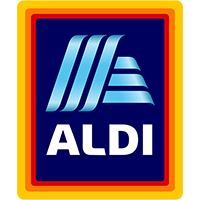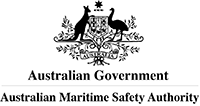In the fast-paced digital landscape, understanding your business goals, target audience, and market dynamics is essential for the success of your mobile app. At WNPL, we offer comprehensive business analysis services to help you define your app's requirements and ensure that it aligns with your strategic objectives. This process allows you to define your objectives, identify your target audience, and understand your market. With this valuable knowledge, we can create a mobile app that truly resonates with your customers and fulfills their needs.
In-Depth Analysis of Business Goals:
Our team of experienced analysts works closely with you to gain a deep understanding of your business goals. We conduct thorough research and analysis to identify your unique value proposition, competitive landscape, and market trends. This analysis forms the foundation for developing an app that not only meets your immediate needs but also supports your long-term vision for growth and success.
Identification of Key App Features and Functionalities:
During the business analysis phase, we work collaboratively with you to identify the key features and functionalities that your mobile app should possess. Our analysts have a keen eye for detail and a comprehensive understanding of mobile app best practices. They will help you prioritize your requirements, ensuring that the most important features are included while keeping the development timeline and budget in mind.
Consultation on Leveraging Mobile App Technology:
With our extensive experience in mobile app development, we provide expert consultation on leveraging mobile app technology to drive business growth. We stay up-to-date with the latest industry trends, emerging technologies, and user behavior patterns. By combining this knowledge with our understanding of your business objectives, we can recommend innovative solutions and strategies to enhance user engagement, improve operational efficiency, and achieve your desired outcomes.
Requirement Gathering and Documentation:
Our analysts excel in gathering requirements through workshops, interviews, and extensive discussions. They have excellent communication skills, allowing them to extract valuable information from stakeholders and subject matter experts. Based on these insights, we create comprehensive requirement documents that serve as a roadmap for the development process. These documents outline the app's functionalities, user flows, technical specifications, and any integration requirements with other systems.
Collaborative Approach:
We believe in a collaborative approach to business analysis. We value your expertise and encourage your active participation throughout the process. By working closely together, we ensure that your vision is translated into a concrete set of requirements, and your app reflects your unique brand identity and values.
Steps WNPL takes
When undertaking business analysis for enterprise custom mobile app projects, WNPL follows a systematic approach to ensure a thorough understanding of the client's requirements and objectives. Here are the steps we take during the business analysis phase:
1. In-Depth Discovery and Requirement Gathering:
We conduct comprehensive meetings and workshops with stakeholders to understand their business goals, challenges, target audience, and desired outcomes for the mobile app project. We identify key functionalities, integration requirements, and performance expectations.
2. User Research and Persona Development:
We perform user research through surveys, interviews, and usability testing to gain insights into the target audience's preferences, behaviors, and needs. We create user personas that represent different user types and demographics to inform the app's design and functionality decisions.
3. Market Analysis and Competitive Assessment:
We analyze the market landscape, industry trends, and competitors to identify opportunities and differentiate the mobile app. We assess the strengths and weaknesses of existing apps in the same domain to determine how the custom mobile app can provide unique value and a competitive edge.
4. Scope Definition and Documentation:
We collaborate with stakeholders to define the project scope, including the app's features, functionalities, and target platforms. We document the scope using techniques such as use case diagrams, functional requirements, and user stories to ensure a clear understanding of the project's boundaries and deliverables.
5. User Experience (UX) Design:
We focus on creating an intuitive and user-friendly mobile app by developing wireframes, user flows, and interactive prototypes. Through iterative design and usability testing, we refine the app's user experience, ensuring it aligns with the target audience's expectations and goals.
6. Technical Feasibility Assessment:
We evaluate the technical feasibility of the project by assessing the compatibility of required technologies, existing systems, and data integration needs. We consider factors such as scalability, security, performance, and infrastructure requirements to ensure a robust and future-proof solution.
7. Requirement Prioritization and Road mapping:
We collaborate with stakeholders to prioritize features based on their business value, user impact, and development complexity. This helps us create a roadmap that outlines the release cycles and feature iterations, ensuring a phased approach to app development and aligning it with the client's goals and budget.
8. Documentation and Communication:
Throughout the business analysis phase, we maintain detailed documentation of the requirements, user stories, and project specifications. We ensure effective communication channels with the client, conducting regular meetings, and providing status updates to ensure transparency and alignment throughout the project.
Tools Commonly Used in Business Analysis
During the business analysis phase of custom mobile app projects, WNPL utilizes a variety of tools to facilitate effective analysis and documentation. These tools help streamline the process, enhance collaboration, and ensure accurate representation of requirements. Here are some commonly used tools in business analysis:
1. Requirements Gathering and Documentation:
Document Management Tools: Tools such as Microsoft Word, Google Docs, and Confluence are commonly used for capturing and organizing requirements. They enable collaborative editing, version control, and centralized storage of requirement documents.
Mind Mapping Tools: Mind mapping software like MindMeister and XMind helps visually capture ideas, relationships, and requirements in a structured and hierarchical format. It facilitates brainstorming sessions and promotes a clear understanding of complex requirements.
2. Process Modeling and Analysis:
Unified Modeling Language (UML) Tools: UML modeling tools like Lucidchart, Visual Paradigm, and Enterprise Architect allow business analysts to create visual representations of business processes, use cases, and activity diagrams. These tools assist in analyzing and improving the flow of activities within the app.
3. User Experience (UX) Design and Prototyping:
Wireframing Tools: Tools like Sketch, Adobe XD, and Balsamiq enable the creation of low-fidelity wireframes that outline the app's layout, navigation, and basic interactions. They help visualize the app's structure and user flow before moving into high-fidelity design.
Prototyping Tools: Interactive prototyping tools like InVision, Proto.io, and Figma allow the creation of clickable app prototypes. These prototypes simulate user interactions, helping stakeholders and developers validate the app's functionality and user experience.
4. Collaboration and Communication:
Collaboration Platforms: Collaboration tools such as Microsoft Teams, Slack, and Trello facilitate effective communication and collaboration among project stakeholders. They allow real-time messaging, file sharing, task management, and seamless coordination between team members.
Video Conferencing Tools: Video conferencing tools like Zoom, Microsoft Teams, and Google Meet enable virtual meetings, workshops, and discussions. They support screen sharing, remote whiteboarding, and recording capabilities, enhancing remote collaboration.
5. Requirement Traceability and Management:
Requirements Management Tools: Tools like JIRA, TFS, and IBM Rational DOORS help manage and track requirements throughout the project lifecycle. They enable requirement traceability, change management, and provide a centralized repository for requirement documentation.
6. Data Analysis and Visualization:
Data Analytics Tools: Tools such as Microsoft Excel, Tableau, and Power BI assist in data analysis, visualization, and reporting. They help identify trends, patterns, and insights from user data and support data-driven decision-making.
Further reading:
Here are some further reading references related to business analysis for custom mobile app projects:
- "Business Analysis for Practitioners: A Practice Guide" by Project Management Institute (PMI)
This guide provides comprehensive insights into business analysis practices, techniques, and tools. It offers practical guidance for business analysts in various domains, including mobile app development.
- "Requirements Engineering: Fundamentals, Principles, and Techniques" by Klaus Pohl and Chris Rupp
This book explores the fundamentals of requirements engineering, including business analysis techniques. It covers topics such as requirements elicitation, analysis, documentation, and validation, with a focus on mobile app development.
- "Effective Requirements Practices" by Ralph R. Young
This book offers practical advice on requirements gathering and analysis, emphasizing effective communication and collaboration with stakeholders. It covers techniques for identifying, documenting, and validating requirements in mobile app projects.
- "User Stories Applied: For Agile Software Development" by Mike Cohn
This book provides insights into writing and prioritizing user stories, a critical aspect of business analysis in agile development environments. It offers techniques for capturing user needs and translating them into actionable requirements.
- "Business Analysis Techniques: 99 Essential Tools for Success" by James Cadle, Debra Paul, and Paul Turner
This comprehensive guide covers a wide range of business analysis techniques applicable to various industries and project types. It includes tools and methods for requirements gathering, process modeling, stakeholder analysis, and more.
- "The Business Analyst's Handbook" by Howard Podeswa
This handbook offers practical guidance for business analysts, covering various aspects of the profession, including requirements analysis, stakeholder management, and communication techniques. It provides insights applicable to mobile app development projects.
- "A Guide to the Business Analysis Body of Knowledge® (BABOK® Guide)" by International Institute of Business Analysis (IIBA)
This guide is a comprehensive resource for business analysis practices and knowledge areas. It covers various aspects, including requirements analysis and management, stakeholder engagement, and business process improvement.









